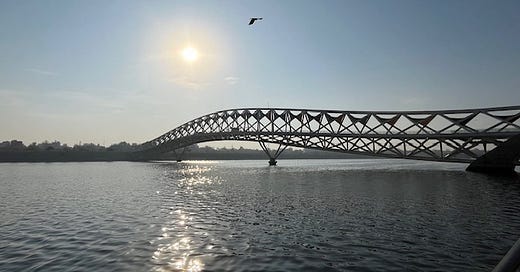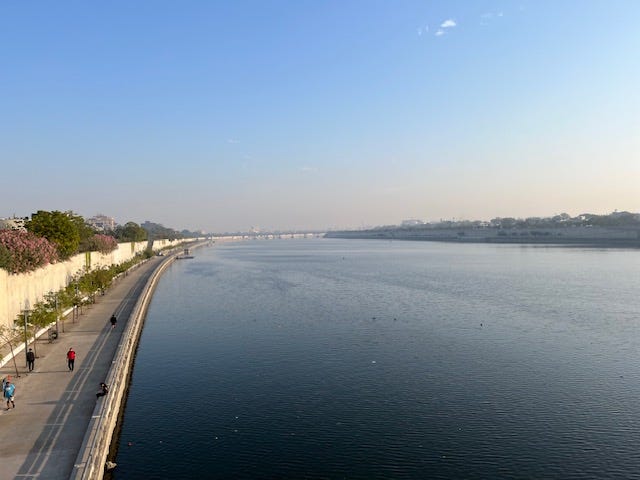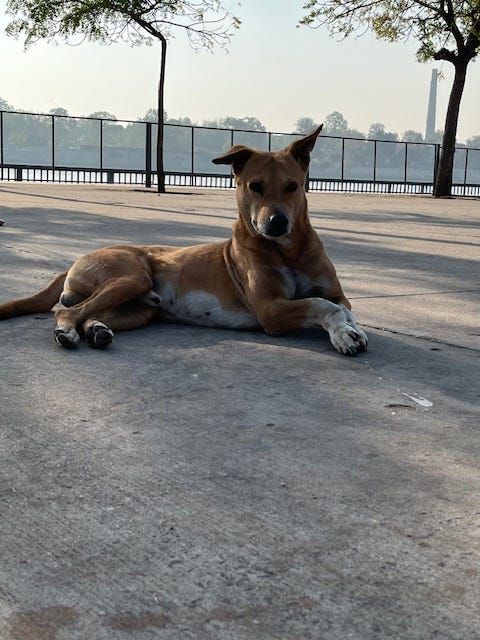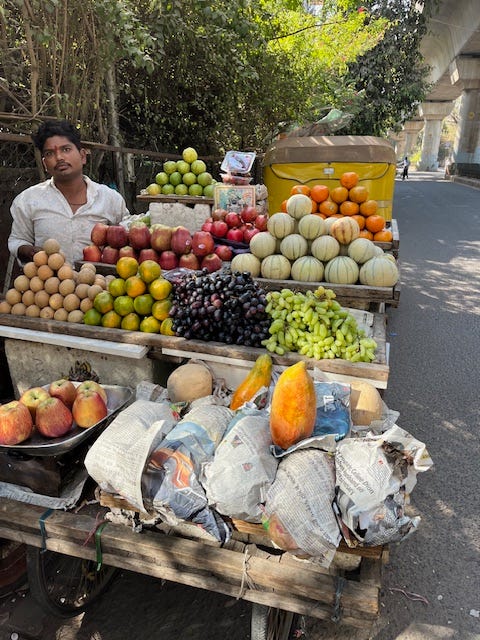The hotel was exceptionally modest but it was, at least, on the banks of the Sabarmati River and there was a view from the breakfast room which was pleasing on the eye but an assault on the other senses for those uninitiated.
One morning, at low tide, a man waded through the mud and paddled into the water until shin height whereupon he abluted and then took a toothbrush from his top pocket, dipped it into the river and cleaned his teeth.
This is not to judge but to demonstrate how extraordinarily the city has changed from November 1997, when South Africa played a Test match in Ahmedabad, to the current day. Not only has the Sabarmati been tamed into a magnificent, clean beacon of the city’s transformation and prosperity, elevated highways and Metros have cleared the streets of the suffocating traffic which made traveling even short distances a wretched chore.
The banks of the river are now wide, inviting walkways with billions of tons of concrete providing jogging tracks, coffee corners and snugs for courting couples to while away a few minutes during their lunch breaks. The city still has slums but they have decreased from 70% of the population to less than 20% even though the population has increased from around three million to nine million in the time frame between ’97 and now.
The old Sardar Patel Stadium, with its dilapidated charm, was demolished in 2015 and the Narendra Modi Stadium built on the same site with its vast expanses officially opened in 2020. The Australian architecture company which won the tender still claims it has an official capacity of 110,000 but folklore, hyperbole and bombast have made that number 132,000. It’s still the largest cricket stadium in the world.
Even the dogs on the banks of the Sabarmati aren’t the scavenging, wild things they used to be. Like the river itself, they seem to have been tamed by the weight and heat-absorbing qualities of the immaculately clean constructions on either side. The walkways are swept incessantly by workers with reed brushes who look healthy and happy.
Modi was Chief Minister of Gujarat from 2001 until 2014 when he was destined for higher honours but Ahmedabad is his home and boy, has he looked after it. The first train ling between Ahmedabad and Mumbai (Bombay) was built in 1868 to facilitate the textile industry’s exports and the journey took between 24 and 36 hours. Now a bullet-train link is being built which is scheduled for completion in 2030 and will cut the 600km journey down to three hours.
His home town is the third fastest growing city in the country and also takes bronze in the category for ‘most comfortable/best lifestyle’ in India. There are literally thousands of small hotels far better than the one I dimly recall from 29 years ago (part of me doesn’t want to recall it) and there is a vibrancy on the streets nobody could deny.
My last visit to the city was during the ‘23 World Cup. It was a nostalgic return to the old days of traditional freelancing, mostly for the readers of this column, and I’d enjoyed a golden run of $50-a-night hotels until my single ‘bomb’ - here. Miserable enough to consider quitting the mission, a lavishly generous reader, unprompted, booked me a room in the Marriott. Thank you, Sean!
There are no ‘bars’ as many tourists would know them, of course, because the State of Gujarat is ‘dry’. Those visitors especially keen for a sundowner can overcome the hurdle by applying for a license, which takes a day or two, and then standing in a queue for several hours. By which the moment may have passed. As good fortune goes, the small bottle of mouthwash in my toiletry bag tasted unusually like something from the Buitenverwachting Estate in Cape Town during this fleeting visit.










I suppose a wine box inner is too obvious....ha ha
Cheers 🍷